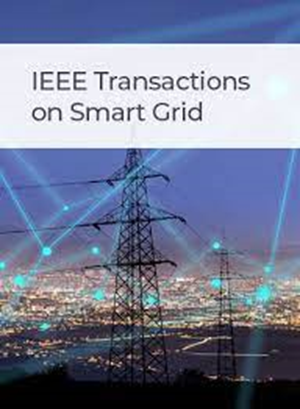Synchro-Waveform-Based Event Identification Using Multi-Task Time-Frequency Transform Networks
IF 8.6
1区 工程技术
Q1 ENGINEERING, ELECTRICAL & ELECTRONIC
引用次数: 0
Abstract
Influenced by the transient dynamics and reduced inertia characteristics of high-penetration renewable energy systems, power system events frequently exhibit distinct characteristics such as high-frequency components including wide-band oscillations and hyper-harmonics. This makes standard systems face challenges including significant latency and reduced accuracy due to limited data resolution. However, current methods face significant limitations, including insufficient pattern capture ability, low noise immunity, limited feature learning, and restricted localization capabilities, thereby hindering real-time performance. To tackle this issue, this paper proposed a novel synchro-waveform-based event identification approach via a Multi-task Time-frequency Transform Network (MTTNet). Initially, a Time-frequency Transform Block (TTB) is developed to extract both local and global information. The TTB leverages both Fourier and S-transforms to derive comprehensive time-frequency information from synchro-waveforms. Subsequently, a multi-task learning strategy is employed to identify the type and distinguish localization of events. Integrating the TTB and multi-task learning, the MTTNet is designed for synchro-waveform-based event identification, incorporating an adaptive weighting strategy and simplified computation for the S-transform. Two different datasets, comprising simulated and actual synchro-waveforms, are collected from the IEEE 123 bus system and a real-world high-penetration renewable energy system using a universal grid analyzer. Extensive experiments on various conditions are carried out. Results demonstrated that the MTTNet consistently surpasses both basic and advanced baselines, with maximum improvements of 13.24% and 9.86%, respectively, while reducing the calculation burden by 15-19 times to achieve real-time event identification.基于同步波形的多任务时频变换网络事件识别
受高渗透可再生能源系统的暂态动力学和减小惯性特性的影响,电力系统事件经常表现出明显的特征,如高频成分,包括宽带振荡和超谐波。这使得标准系统面临挑战,包括由于有限的数据分辨率而导致的显著延迟和准确性降低。然而,目前的方法面临着显著的局限性,包括模式捕获能力不足、抗噪声能力低、特征学习有限和定位能力有限,从而阻碍了实时性能。为了解决这一问题,本文提出了一种基于同步波形的多任务时频变换网络(MTTNet)事件识别方法。首先,提出了一种时频变换块(TTB)来同时提取局部和全局信息。TTB利用傅里叶变换和s变换从同步波形中获得全面的时频信息。随后,采用多任务学习策略识别事件类型和区分事件定位。MTTNet集成了TTB和多任务学习,设计用于基于同步波形的事件识别,结合了自适应加权策略和s变换的简化计算。两个不同的数据集,包括模拟和实际的同步波形,从IEEE 123总线系统和一个现实世界的高渗透可再生能源系统中收集使用通用电网分析仪。在各种条件下进行了大量的实验。结果表明,MTTNet持续优于基本基线和高级基线,最大改进幅度分别为13.24%和9.86%,同时减少了15-19倍的计算负担,实现了实时事件识别。
本文章由计算机程序翻译,如有差异,请以英文原文为准。
求助全文
约1分钟内获得全文
求助全文
来源期刊

IEEE Transactions on Smart Grid
ENGINEERING, ELECTRICAL & ELECTRONIC-
CiteScore
22.10
自引率
9.40%
发文量
526
审稿时长
6 months
期刊介绍:
The IEEE Transactions on Smart Grid is a multidisciplinary journal that focuses on research and development in the field of smart grid technology. It covers various aspects of the smart grid, including energy networks, prosumers (consumers who also produce energy), electric transportation, distributed energy resources, and communications. The journal also addresses the integration of microgrids and active distribution networks with transmission systems. It publishes original research on smart grid theories and principles, including technologies and systems for demand response, Advance Metering Infrastructure, cyber-physical systems, multi-energy systems, transactive energy, data analytics, and electric vehicle integration. Additionally, the journal considers surveys of existing work on the smart grid that propose new perspectives on the history and future of intelligent and active grids.
 求助内容:
求助内容: 应助结果提醒方式:
应助结果提醒方式:


